What is a Dimpleplasty Procedure?
(Techniques and Challenges)

Dimples are becoming increasingly popular due to the influence of celebrities and social media. Many of our patients tell us how much they admired their siblings who had dimples and received a lot of attention. It’s amazing how many individuals come to our practice for dimple creation surgery, also known as dimpleplasty.
Dimple creation surgery is becoming increasingly popular, with patients traveling from all over the country and around the world to have it done. Dimpleplasty is an interesting niche in which we have gained popularity, and we have even been highlighted in the media for this surgery. I’ll explain how I perform dimple surgery in my practice.
Typical Consultation for Dimpleplasty
During consultation for dimpleplasty, I ask the patient questions such as why they want to have dimples, and what it is about dimples that they think are good or desirable.
After evaluating the patient’s medical history and current medications, I begin the consultation by showing them where a dimple would normally come out if they had been born with one.
People frequently believe that dimples are considerably higher in the cheeks than they actually are when a person is born with them. There is a specific region in the cheek that I refer to as the “sweet spot” where the anatomy allows for a dimple to develop. I show them where the sweet spot is, and mark it. I then ask them to hold a Q-tip and push in those spots.
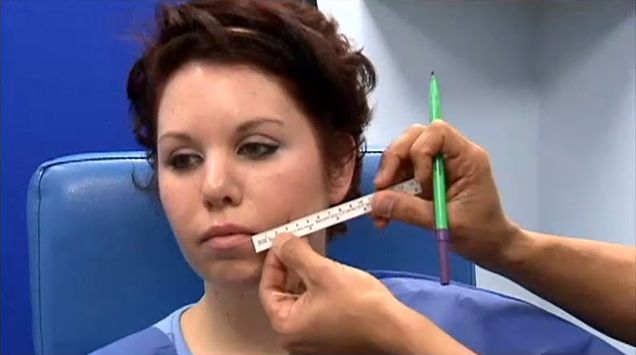
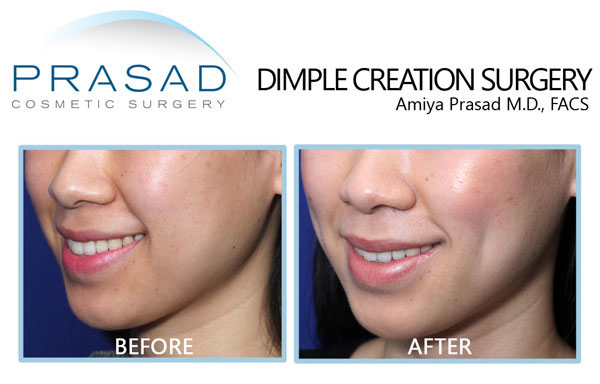
They are then photographed smiling to give them an idea of how the final results will look.
The goal of dimple surgery is to replicate the natural appearance of a connection between a muscle within the mouth called the buccinator muscle, and the cheek skin, so that when you smile, you get these wonderful, natural-looking dimples.
Dimpleplasty may appear to be a simple operation, but it contains deceptively complex factors that can make it less predictable than other cosmetic procedures.
Dimpleplasty Procedure - How it is Done
When we make dimples surgically, we are connecting that muscle to the interior of the mouth, between the muscle and the skin of the cheek. When you smile, the muscle contracts, causing the cheek to pull in, giving you this beautiful dimple appearance.
There are several strategies for accomplishing this, but I’ve devised a version that has a fairly consistent rate of success.
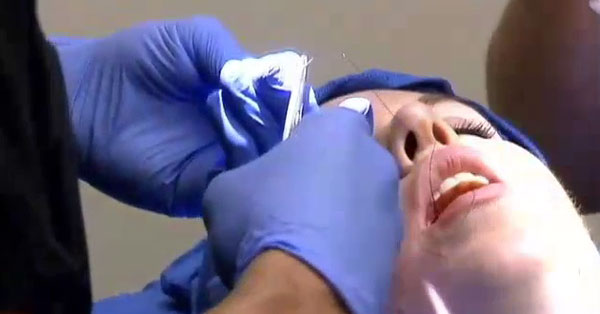
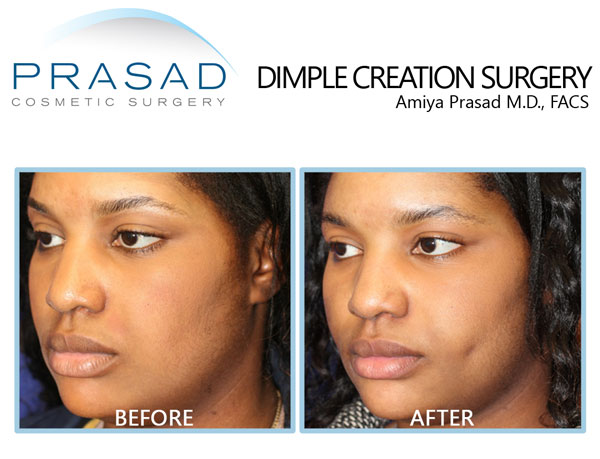
Variables that can influence outcome include the relative thickness of the skin, the quantity of fat beneath the skin, the suppleness of the skin, and the efficacy of the muscle-to-skin connection after suture placement.
People with thicker skin and a lot of fat in the cheeks have a more difficult time getting a defined, deep dimple. There’s also a potential that the dimple won’t be as deep, or in the shape you prefer. There is a limit to what may be done, and sometimes improvement or revision is required, just like with any other cosmetic surgical treatment.
What to Expect After the Procedure?
It’s important to understand that you can expect dimples to temporarily be visible even when you’re not smiling. It is also usual to have varying degrees of dimple depth over the first several months.
This is because we want to ensure that the link between the muscle and the skin is strong enough to keep the dimple in place over time.
I advise my patients that they should be prepared for this stage of the healing process, and that if they ask for a more modest dimple right away, the dimple may not stay long. Interestingly, most of our patients have no objections to the indentation that is always visible briefly, and they have indicated that its presence is not an issue in social situations.
Aftercare
As far as aftercare, I remind my patients that because we are working on the inside of the mouth, they should take basic precautions to keep their mouth clean. We routinely prescribe antibiotics, and ask our patients to use antibacterial mouthwash. We also give them particular restrictions on the sorts of food they can eat, as well as the right temperature of the food, to allow the opening inside the mouth to heal properly and reduce the risk of infection.
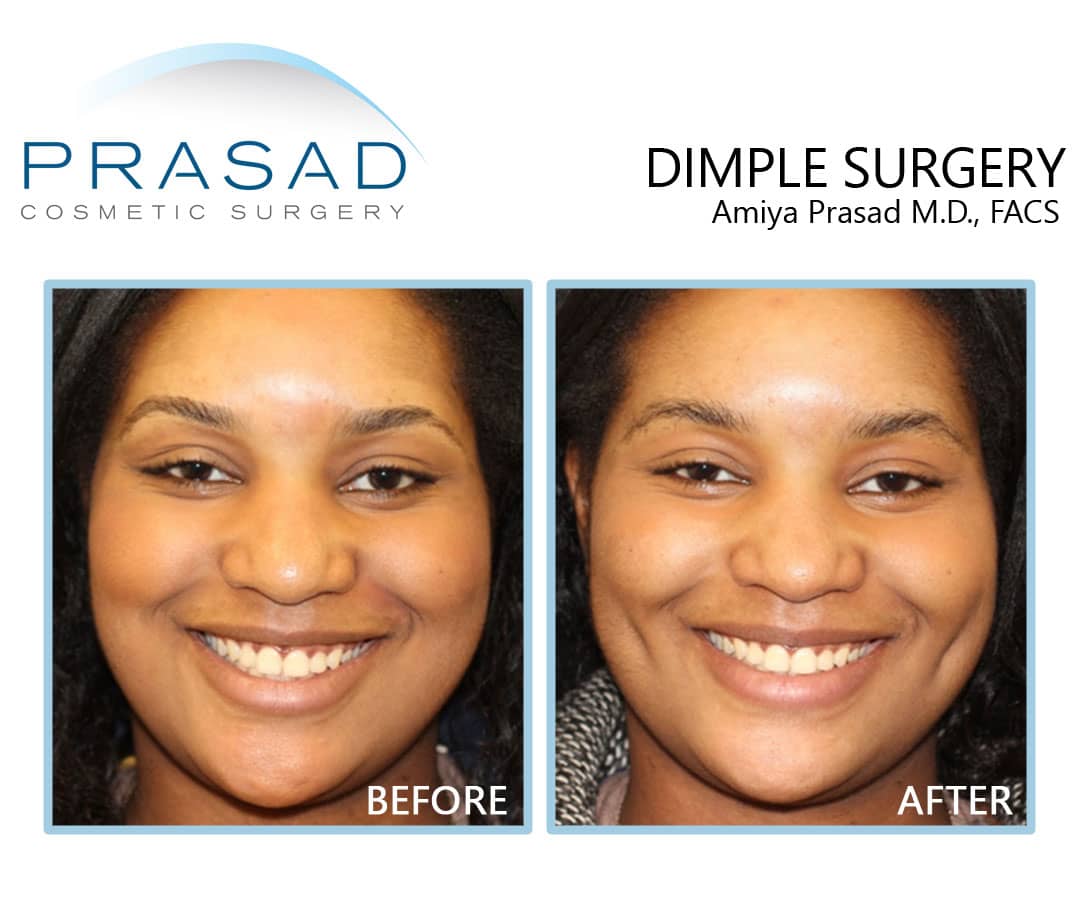
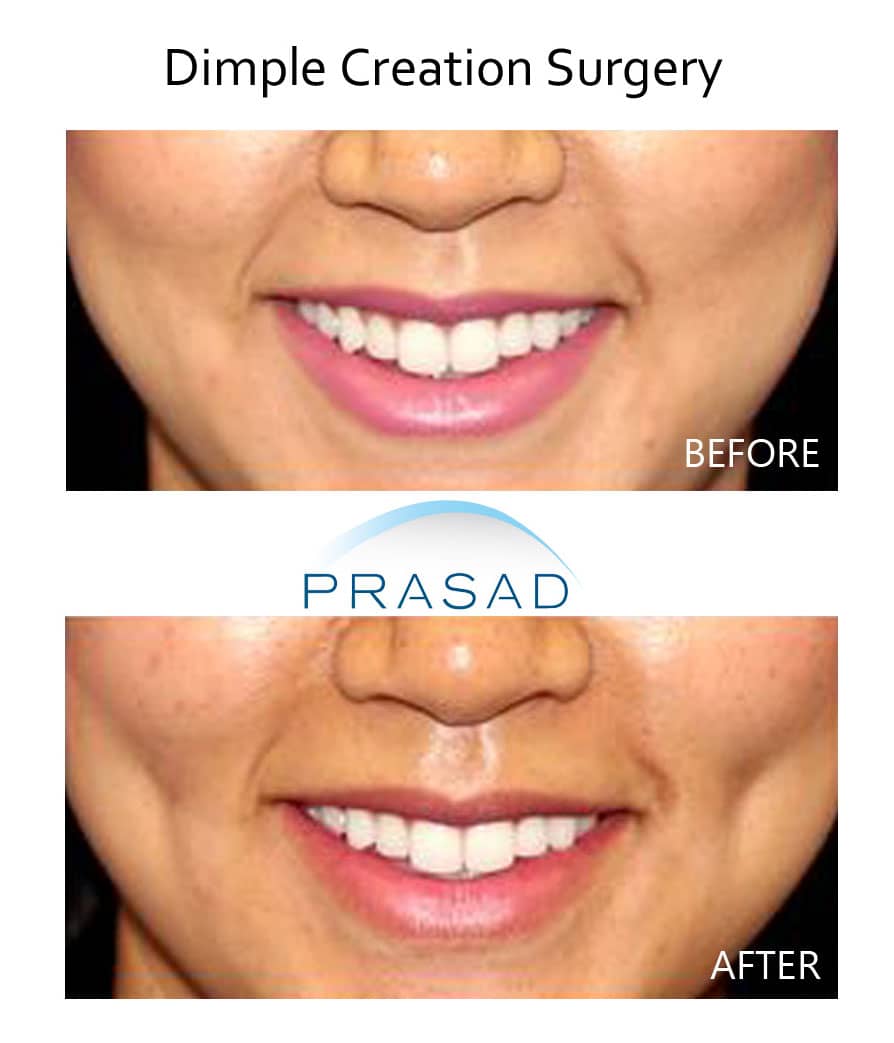
In general, patients can return to work the day after dimple surgery. Since the surgery is performed entirely inside the mouth, there is no external incision, stitches, or anything else visible on the outside other than the dimple depression.
Over the course of several months, the dimple softens and becomes more apparent when smiling. A faint or not-so-subtle indentation in the cheek is commonly noticed in people with natural dimples.
Conclusion:
If you’ve been thinking about having dimpleplasty, consult with a specialist who has extensive expertise conducting the procedure. I usually argue that this method is deceptively complicated because you’re working in a little space to get a very particular outcome. I’ve been referred patients for dimple surgery by doctors who are in positions such as chief of plastic surgery at a major hospital.
It’s a niche procedure that doesn’t have anything to do with being a better surgeon, as it’s a matter of experience which comes from performing this type of surgery regularly. Many acclaimed surgeons simply don’t perform dimpleplasty with enough frequency to be comfortable in performing the procedure.
How Long Does Dimpleplasty Last?
Surgically created dimples can be influenced by changes in facial fat volume and weight, thus keeping a healthy weight, and living a fitness-focused lifestyle are recommended. Surgically generated dimples can endure a long time, and provide the impact to your smile you’ve always desired.
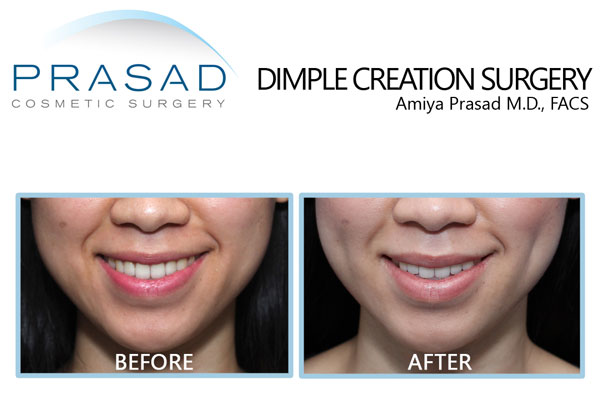
Dimpleplasty in Manhattan NYC and Long Island, New York
Dr Amiya Prasad is a Board-certified cosmetic surgeon, and Fellowship-trained oculofacial plastic and reconstructive surgeon. He’s been in practice in Manhattan and Long Island for over 25 years. To schedule a consultation, fill out the form below or call any of our offices: (212) 265-8877 for Manhattan, (516) 742-4636 for Garden City Long Island Office, or (703) 356-1336 or (703) 821-2683 for Vienna, Virginia.
